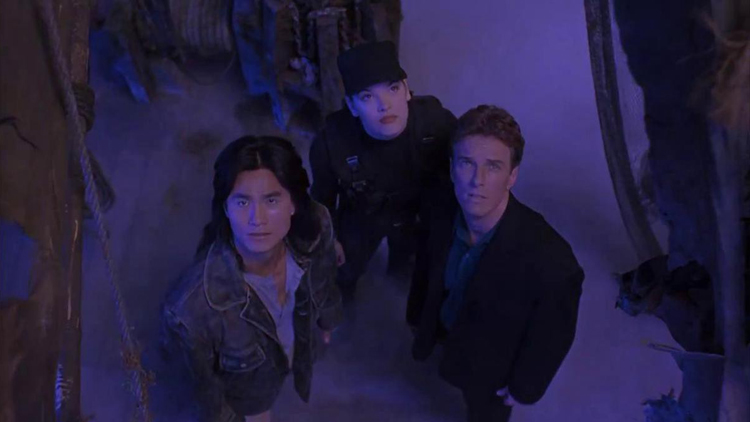
The year was 1992. A new video game just hit arcades, and kids were going crazy for it. Grown ups were also going crazy but in a completely different way. The game was Mortal Kombat, and because it was the bloodiest, most violent game in arcades, it became an instant hit. With the kind of popularity it obtained, it’s no surprise that it would soon become the basis for a movie. That happened in 1995 when the live-action film Mortal Kombat hit theaters.
Directed by Paul Anderson, better known as Paul W. S. Anderson, who also adapted Resident Evil for the big screen, the Mortal Kombat movie is basically a low-rent Enter the Dragon with more fire-breathing. The film centers on Liu Kang (played by Robin Shou), a character torn straight from the video game, as he enters a once-in-a-generation tournament to avenge his brother’s death at the hands of Shang Tsung (Cary-Hiroyuki Tagawa). Oh yeah, he also wants to save the world.
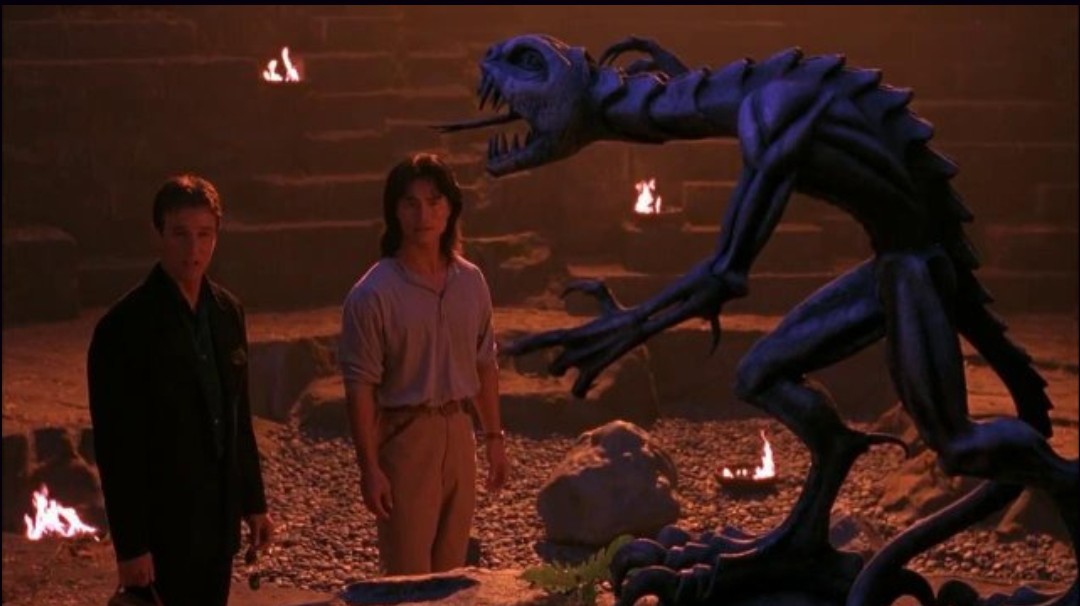
Joining him on his crusade are military officer Sonya Blade (Bridgette Wilson) and movie star Johnny Cage (Linden Ashby), each with their own reasons for joining the tournament. Sonya Blade wants to find an Australian crime boss named Kano who killed her partner, while Johnny Cage wants to prove to the world that he’s a great fighter.
The purpose of the tournament is to stop the evil Shang Tsung from invading our dimension. Mortal Kombat (which is the actual name of the tournament) was designed by the Elder gods to give Earth a chance to stave off an invasion by the emperor of Outworld. If Outworld wins ten straight victories in Mortal Kombat, they can invade. So far, Outworld has won nine.
Non-sensical world-building aside, Mortal Kombat has a lot of good going for it. For starters, it knows exactly what its audience wants. All of that “plot” and “substance” happens early in the film to get it out of the way and make room for all of the fights. Once the actual tournament begins, the film just goes from one fighting sequence to the next, usually without any sort of transition. And it’s magical.
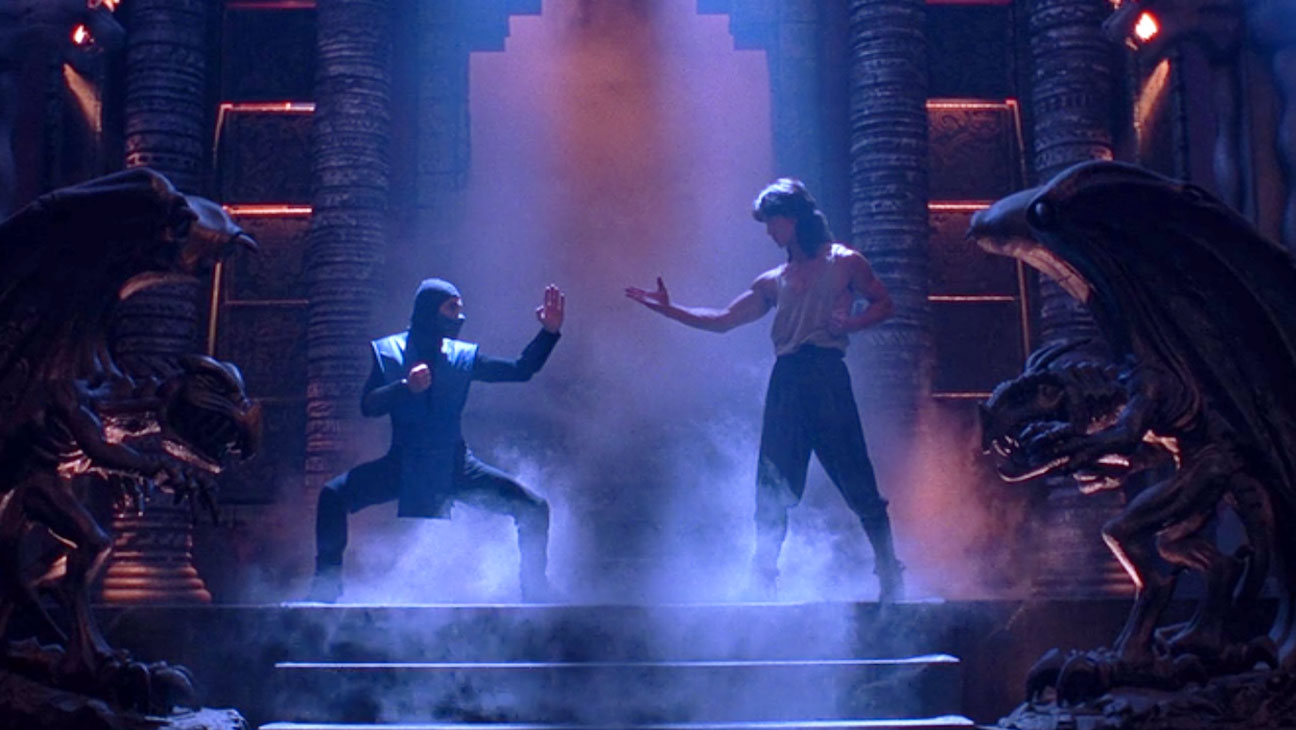
The tournament begins with a fight between Liu Kang and some random fighter. As soon as Kang wins, we go right into a fight between Sonya and Kano. Followed by a sequence of Cage versus Scorpion, which sees them battling in two different locations. Then we’re back to Liu Kang as he goes against Kitana in probably the softest fight sequence in the entire film, right before Kang faces off against Sub-Zero. And all of these happen back-to-back. There’s no dull exposition between each, no deepening of the storyline. Just battle after battle after battle for a good twenty straight minutes.
After all of this, viewers are given a full introduction to Goro, the game’s four-armed mini-boss. Goro is hyped up to be a powerful force who easily defeats any opponent he faces, so by the time Johnny Cage steps up to battle him, it’s almost anticlimactic that Cage wins by kicking Goro in the nuts and knocking him off a cliff.
And I really have to talk about Goro’s look. He’s a huge, super-imposing creature with four arms and, luckily, the filmmakers opted to use practical effects to bring him to life instead of computer graphics. It looks… surprisingly good when you account for the low budget the film had to play with.
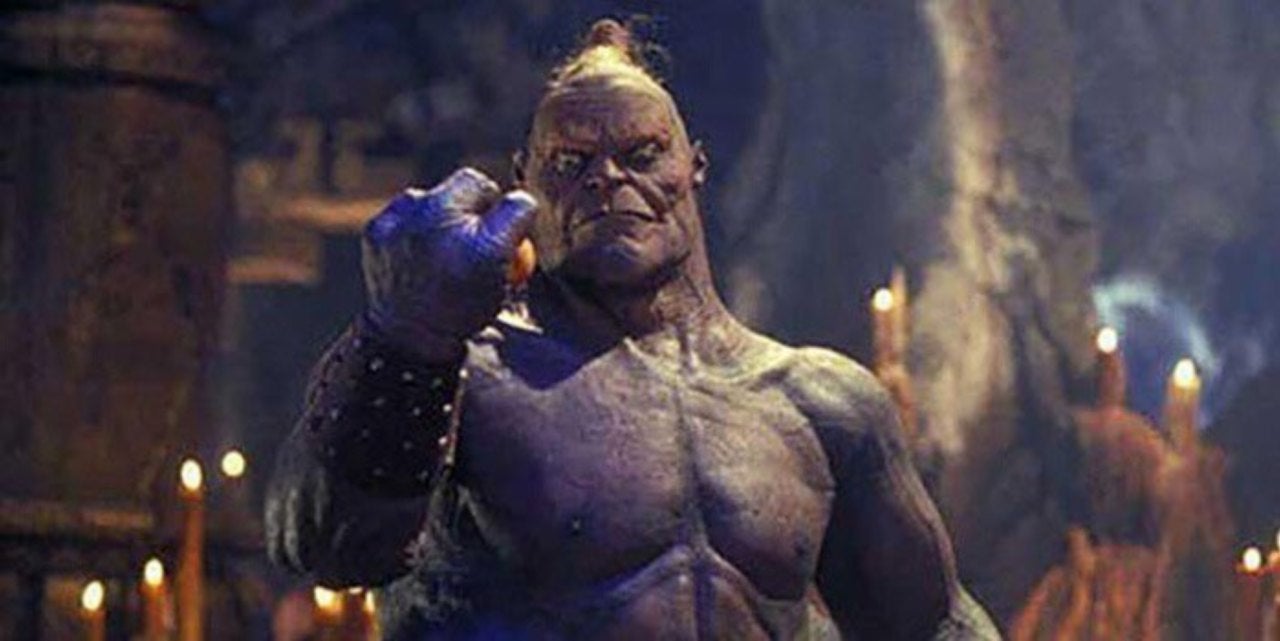
The film is chockful of special effects shot and, being filming in the mid-90s, one shouldn’t expect the CGI to stand up to today’s standards. But somehow, the visual effects are subpar even by mid-90s standards. The movie had a budget of $18 million, which is far below the average at the time. For a movie like Mortal Kombat, a property that could best be described as a fantasy/horror mash-up, computer graphics is a key element of what’s on-screen. Very few of the characters and their special abilities could be recreated if not for computer effects. So, given the small budget, it’s no surprise that the special effects look cheesy and dated. Despite that, the movie makes it work. And I do have to give it credit for the matte painting visual effects; some of the wide-shot landscapes in the movie are very impressive.
Filmed mostly in 1994, Mortal Kombat based its cast of characters on the second video game, which offered a few additional playable characters than the first. Though not all of them are represented in the film (notably missing are Mileena and Baraka), it surely includes the majority of the fan favorites. In addition to Kang, Cage, and Blade, Scorpion and Sub-Zero are both present, though as minions of Shang Tsung, they aren’t given much to do. Lightning king Raiden is a fairly big part of the film, which explains why he’s played by the biggest name. Christopher Lambert, best known for his roles in the Highlander films, brings Raiden to life, and his stoic presence doesn’t add much to the film. He also doesn’t do much besides ensuring Shang Tsung follows the rules of the tournament. Even Outworld emperor Shao Kahn shows up at the very end, but he’s treated more like a tease instead of an actual character.
Bridgette Wilson as Sonya Blade was an odd casting choice. Wilson, who was a darling of 1990s film, having appeared in classics like Billy Madison and Last Action Hero, grumbles her way through scenes, fumbling through fight scenes with all the grace of a toddler. She’s not terrible, exactly, but with all the affection I have for Sonya Blade as a character, I was less than impressed here.
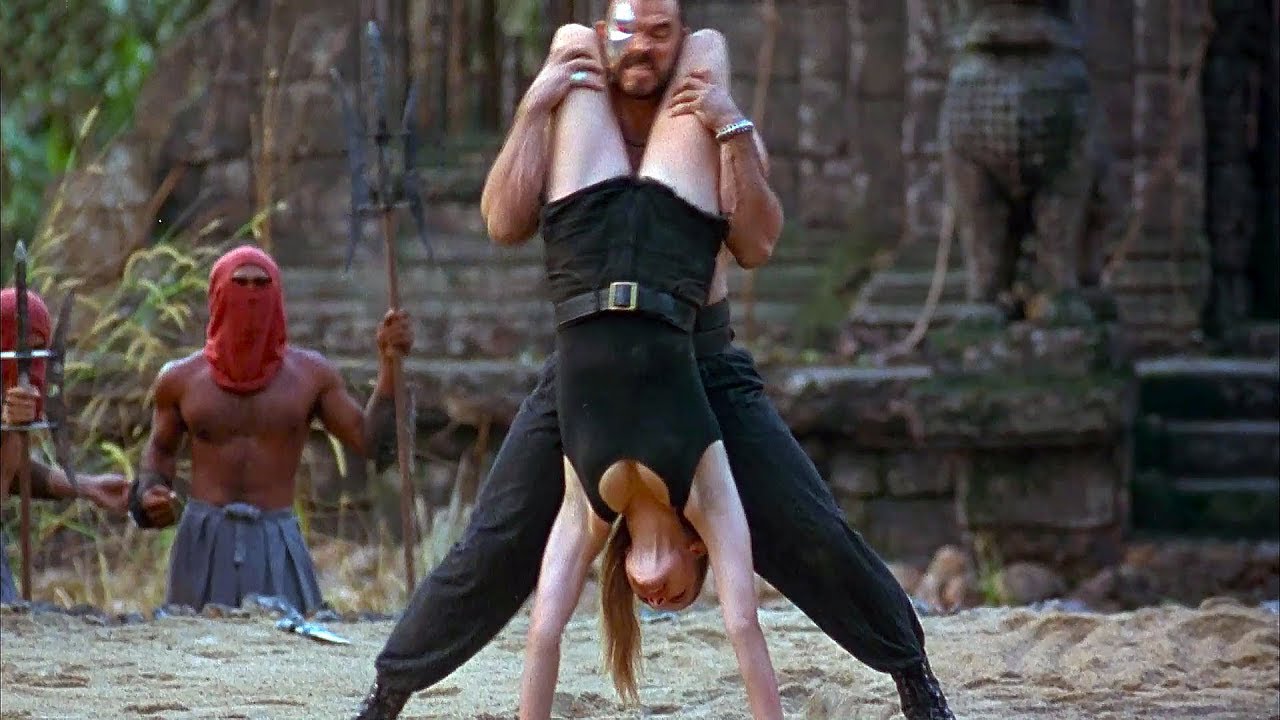
Probably the best depiction, though, is Trevor Goddard as Kano. Kano doesn’t have a large role in the film, but with all the screen time that Goddard gets, he’s clearly enjoying himself. He has no pretenses of the kind of movie he’s in, and his enthusiasm shows in his performance.
Speaking of fan favorites, we need to discuss the fan service in Mortal Kombat, in which there is a lot. Naturally, most of the nods to the games are the lines of dialogue stolen straight from the games themselves, such as Shang Tsung constantly saying, “Finish him!” and “Flawless victory,” but one of the biggest excitements in the film is Scorpion’s classic, “Get over here!” It happens only once, when Scorpion is facing off against Johnny Cage in the forest, but it was enough to bring a smile to even my anhedonic face.

In addition to that, many of the game’s signature moves were translated into the film, such as Liu Kang’s bicycle kick and Sonya Blade’s hand-stand chokehold. For the most part, these elements are blended well within the action, and the stunt coordinators performing them pull them off convincingly. Probably the one most people were excited for, however, turned out to be the least impressive. Scorpion, in his fight against Johnny Cage, performs his classic “Fatality” move, which involves him tearing off his face to reveal his skull and breathing fire on his opponent. Unfortunately, the special effects involved in creating the move were… less than ideal, resulting in an awkward-looking sequence. I do appreciate that they tried.
All of that aside, however, Mortal Kombat has to be given credit for its progressiveness. There weren’t many Hollywood films in the mid-90s that would make an Asian actor, Robin Shou, the center of the movie. Hell, there aren’t a lot of Hollywood films now that would make an Asian actor the centerpiece. On top of that, the main antagonist was also played by an Asian actor. So say what you will about it, but the filmmakers at least did what was right for the movie and not what they thought would be the best for the box office numbers.
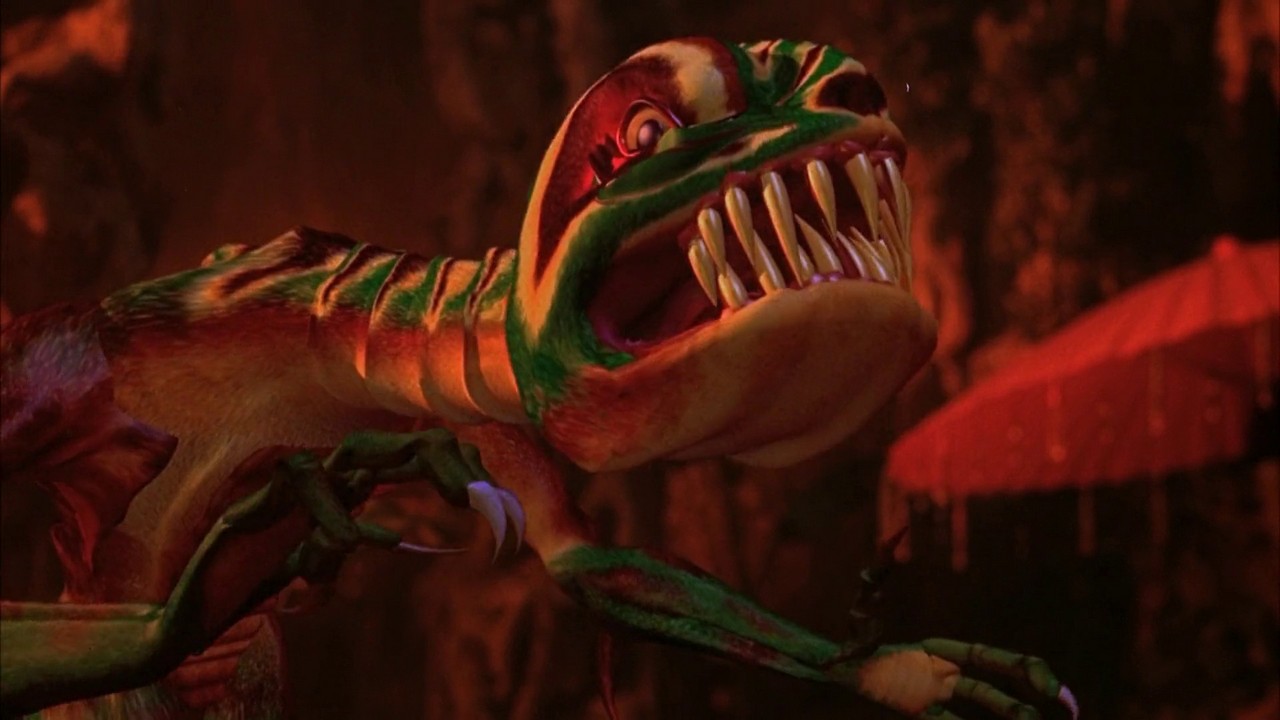
Not like it mattered; Mortal Kombat scored a respectable $127 million in ticket sales on its release. Of course, these days, that would be the budget for most summer action blockbusters but considering Mortal Kombat was made on a paltry $18 million, $127 mill is a damn good take. It’s no wonder a sequel was greenlighted so quickly and at a larger budget. (We’ll ignore the fact that it didn’t fare nearly as well.)
For all of its flaws, Mortal Kombat is by no means a bad movie. And, if you take into account all of the things it had working against it, like a small budget and primitive computer processing power, it’s a miracle it came out as well as it did. But naturally, with a franchise as powerful as Mortal Kombat, well enough can’t be left alone. So if you’re like me and you’re gearing up for the release of the new Mortal Kombat movie, check out the original. It’s streaming on Peacock (with ads for free users), so it’s a good way to whittle away a quiet Saturday afternoon.
If you liked this Rewind Review, be sure to check out the whole series as we take a look back at some of our favorite corners of popular culture from years past!



